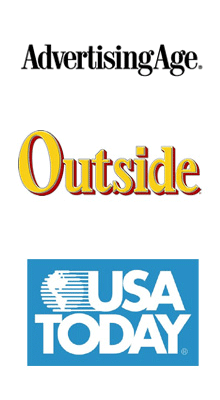
Roger, Roger.
Tweeting While Crashing – Airline crashes are near the top of the ‘things we don’t really like to talk about in the travel industry’ list, luckily, in the case of the recent Continental accident at Denver International Airport, few passengers were seriously injured. And out of those 100 or so passengers, at least one was a tweeter.
Boulder software engineer Mike Wilson…needing to share his experience, he began twittering under the name 2DrinksBehind, broadcasting more than 30 short text messages about the crash and its aftermath and gaining national attention.
Mike’s tweets give the public instant insight into an experience that few of us will ever encounter. Not to mention provides a perfect example of how interactive and social tools such as Twitter are increasing the role of citizen journalism and allowing real-time updates on major news stories. A scary accident, but a fascinating perspective.
http://www.denverpost.com/
Web Video Users Are Day Clickers – A small, but still relevant report on web video usage by daypart or time of day from Nielsen Online. While online video use is continuing to grow rapidly, the lack of saturated broadband internet access at home is creating different viewing patterns for consumers.
During the traditional nine-to-five work week, 65 percent of online video viewers streamed at least one piece of content in October.
http://www.mediaweek.com/
Social Networks: Millions of Users, Not So Many Marketers – Oy, another post about the difficulty of cracking the mythical social networking site advertising code. How do we get these xx million people to pay attention to our ad on social networking site blank?
Anyone still questioning the efficacy of social network marketing needs to look only as far as the 2008 presidential election. Barack Obama rode a wave of social media support to the White House—using both established social networks and homegrown networking site My.BarackObama.com to build a database of millions of supporters.
But despite these and other success stories, the social network ad market is suffering. In fact, eMarketer significantly lowered its forecast for US social network ad spending.
How did Obama do it? Okay, I am going to give away the Barack Obama social media marketing secret…
People actually cared for and were passionate about his campaign!
There you go, that is it. With that little bit of passion from the consumer, the Obama campaign could leverage any social network with their message. Now, does the same formula apply to your brand or product? Probably not. Unless your organization has brand fans that are actively collecting everything with your logo on it…Coca Cola, Harley-Davidson or Apple…your social media marketing campaign on Facebook or MySpace is not going to be as easy as the Obama campaign made it look.
http://www.emarketer.com/
The Future of Mobile – Imagining the Internet: A History and Forecast from Elon University/Pew Internet Project is a great look into the future of technology from some of the best and brightest minds in the world. You could spend a lot of your pre- and post-Christmas ‘work’ day on this site…at least you can say you did some work this week. For this post, just a couple of highlights from the question about the future of mobile:
The mobile phone is just beginning to touch our digital lives. As these relatively inexpensive devices continue to improve in performance and connectivity, they will serve more as a “remote control” to many of our electronic touch points, such as: purchasing retail items through scanning, serving as an electronic passport, turning on our cars/GPS systems, translating text to talk, and video conferencing with our friends through our online accounts. As we improve visual projection and “plugging-in” to larger display systems- mobile phones can serve as the old laptop we once new and lugged.
–Drew Diskin, director of e-strategy, Johns Hopkins MedicineMobile phones also replace our wallets, doubling as identification devices, credit cards, and car keys using RFID tags or a similar technology.
–DJ Strouse, international relations and computer science student, University of Southern CaliforniaMobile phones are affordable, portable, and a virtual appendage for several generations. It is only logical that it will become the primary Internet connection.
–Hinda Feige Greenberg, Ph.D., director of the information center for the Robert Wood Johnson Foundation, dedicated to improving healthcare for AmericansBy 2020 the phone will be melting away into the environment, its functions provided by distributed, intelligent components. People will talk to—and through—their cars, desks, etc.
–Greg Laudeman, utilization catalyst and facilitator, community technology specialist, Georgia Tech Enterprise Innovation InstituteAs screens get bigger everyone will use a mobile device to access the Internet. Everyone!
–Dan Lynch, founder of CyberCash Inc. and Interop Company and an Internet pioneer; board member of Santa Fe Institute; director of computing for SRI International in the late 1970s
Fantastic stuff…and that was only a fraction of the responses. Happy reading over the next few days.
http://www.elon.edu/e-web/predictions/











